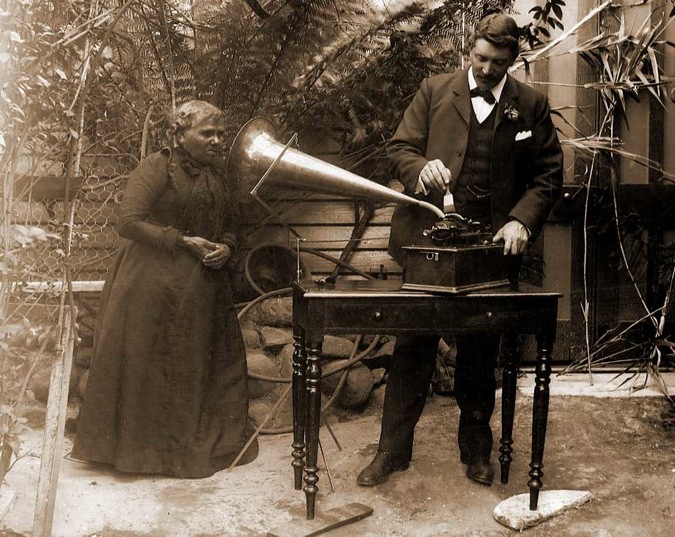The Man and the Woman and the Edison Phonograph: Race, History and Technology through Song
DOI:
https://doi.org/10.60162/swamphen.1.10583Abstract
This is the story behind a photo of Fanny Cochrane Smith singing traditional Tasmanian songs, and being recorded by Horace Watson, in 1903. Fanny Cochrane was the first Aboriginal child born on Flinders Island in 1834, in the settlement established for Tasmania’s Aboriginal people. She claimed to be the last Tasmanian. Tasmania’s and Australia’s history reverberate through this image: cultural contact, genocide and reconciliation, tradition and modernity. The image is of the act of folklore collection at its most poignant. The article explores the life of two individuals and how they came together to create an invaluable record of Tasmanian Aboriginal culture. The reverberations continue to this day as their descendents’ lives are changed through their connection to this story and their continuation of its themes.
For sound files, go to Supplementary Files in tool bar, right
Downloads
Published
Issue
Section
License
Authors who publish with this journal agree to the following terms:- Authors retain copyright and grant the journal right of first publication with the work simultaneously licensed under a Creative Commons Attribution License that allows others to share the work with an acknowledgement of the work's authorship and initial publication in this journal.
- Authors are able to enter into separate, additional contractual arrangements for the non-exclusive distribution of the journal's published version of the work (e.g., post it to an institutional repository or publish it in a book), with an acknowledgement of its initial publication in this journal.
- Authors are permitted and encouraged to post their work online (e.g., in institutional repositories or on their website) prior to and during the submission process, as it can lead to productive exchanges, as well as earlier and greater citation of published work (See The Effect of Open Access).

